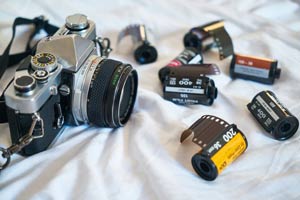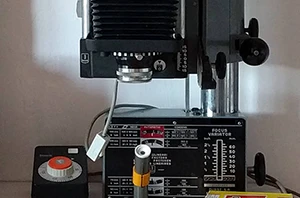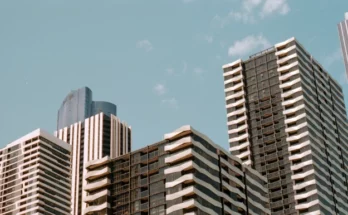
What is reciprocity?
To understand reciprocity failure, you first need to know what reciprocity in photography is. In short, reciprocity is the relationship between the intensity of light in an exposure and it’s duration. It simply means that if you cut the light transmission of a lens in half, you will need to expose the film or sensor for twice the time to maintain the same total exposure.
For example, you are shooting at f/2 with shutter speed of 1/100th of a second. You decide you want to introduce some motion blur into your image, so you need to drop the shutter speed. Stopping down the lens to f/2.8, you decrease the light going to the film by half. You can now lower the shutter speed to 1/50th and get the exact same negative density as before.
This is the physics side of reciprocity. There is, however, a third variable in photographic exposure – the sensitivity of the recording medium. Digital sensors have, for photographic intents and purposes, a linear response. As such, reciprocity holds true for all exposure situations with a digital camera.
Film, on the other hand, is a bit more temperamental. In certain situations, a film exposure might not result in the negative reciprocity would suggest. This is called reciprocity failure. Let’s look into it.
What is reciprocity failure?
Reciprocity failure, also called the Schwarzschild effect, is the term used to describe photographic film’s non-linear response to low light exposure. What it means is that once the light levels reaching the film drop below a certain threshold, the effective sensitivity of the emulsion decreases. This is most often encountered in night photography, or when long exposure times are desirable for artistic effects. Large format photographers often run into reciprocity failure problems due to the fact that view cameras are routinely used at f/22 or higher.
Some films are better than others. There are emulsions like Fuji Acros that exhibit no reciprocity failure effects up to 2 minutes metered exposure. At the other extreme, Fomapan 100 requires 8x correction at just 10 seconds metered. For any film you use, you can consult the manufacturer’s data sheet for reciprocity failure compensation factors.
For most commercially available film, reciprocity failure kicks in at about the 1 second exposure mark. This means that if your light meter says you need to expose for anything above 1 second, you need to include reciprocity failure compensation. This probably sounds a bit abstract, so let’s look at some examples.
You are shooting a night cityscape from a tripod. You are using an SLR with a 35mm lens and Kodak T-MAX 400 film. You’ve decided that you need an aperture of f/5,6 to get the correct depth of field. Your lightmeter says that you need to expose the film for 10 seconds to get a proper exposure. According to Kodak’s data sheet, T-MAX 400 requires 1/2 stop reciprocity factor at 10 seconds. This translates into a 15 second reciprocity corrected exposure.
Reciprocity failure in short exposures
While the Schwarzschild effect is mostly encountered during long (<1 sec) exposures, extremely short exposures (>1/1000 sec) can also result in reciprocity failure. In both cases, the amount of light reaching the film is so small that the emulsion is having a hard time registering it. High shutter speed reciprocity failure is rarely encountered and not very well documented.
Few manufacturer’s publish adjustment factors for high shutter speeds. This is also due to the fact that modern films generally perform better at higher speeds. Most Kodak and Ilford films today do not need reciprocity compensation up to 1/10 000 sec. According to the Kodak T-MAX 100 data sheet, that film requires a compensation of +1/3 of a stop at shutter speed of 1/10 000 sec.
Some older style emulsions, however, like Fomapan 100 might require compensation at speeds as slow as 1/1000 sec. Foma does not list reciprocity factors for high shutter speeds in it’s data sheets, but states no compensation is needed from 1 sec to 1/1000th. Given the poor reciprocity characteristics of Fomapan 100 at slower speeds (>1sec), you’re bound to need some if you push past 1/1000 sec. As it is not documented by Foma, the only way to determine this is testing with your particular setup.
Reciprocity failure and contrast
One of the more unpredictable side effects of reciprocity failure compensation is the effect on contrast it may have. This is because it is usually the shadow areas of an image that experience the worst of the Schwarzschild effect. While you extend the exposure to make sure the shadows get enough density, the highlights are getting more than their fair share. The result is increased contrast. This is why some manufacturers recommend adjustments in development in addition to exposure compensation.
Reciprocity failure and colour balance
In addition to contrast, in color films the Schwarzschild effect also affects color balance. This is due to the fact that colour film is comprised of different dye layers in the emulsion. These layers have different formulations and therefore different reciprocity characteristics. In practice, this may make the blue-sensitive layer in your film to gain more density than the others, leading to a blue cast over the resulting image. To counter this, colour film manufacturers publish colour correction factors for long exposure.
If you’re not sure how your film of choice will react to a long exposure, your best bet is to do some testing, preferably with a gray card or a colour chart. Once you’ve done this, you might also consider stocking up on some colour correction filters, so that you can correct any shifts directly in-camera.
Unexpected benefits
While reciprocity failure is generally a nuisance, there are certain situations in which it can actually be useful. For example, if you are looking to do long exposures on the shore to get silky smooth seas and ghostly clouds, you might need to get an exposure time of several seconds. You have a neutral density filter, but it only gets you down to 2 seconds. What else can you do? You get your trusty Fomapan 100! A 2 second exposure is magically transformed into 6 seconds by the wonder of reciprocity failure.



